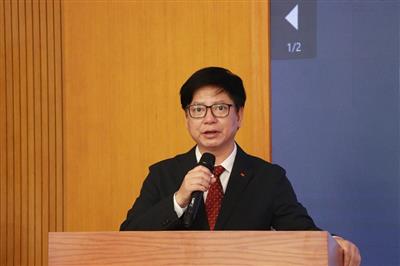
Cooperation among Vietnam’s ASEAN Heritage Parks to enhance nature conservation effectiveness
26/09/2024TN&MTOn September 25, the Department of International Cooperation (under the Ministry of Natural Resources and Environment) organized a workshop titled "Assessing the management, conservation, and sustainable development of biodiversity and ecosystems in Vietnam’s ASEAN Heritage Parks."
This workshop was the first in a series that will be held under the task "Connecting Vietnam’s ASEAN Heritage Parks (AHPs) for the 2023-2025 period in line with the national biodiversity action plan," implemented by the Ministry of Natural Resources and Environment.
The workshop aimed to connect and build a network for sharing information among Vietnam’s ASEAN Heritage Parks while strengthening the natural heritage system and synchronizing various biodiversity-related components of the 2020 Law on Environmental Protection and Decree No. 08/2022/ND-CP.
In his opening remarks, Mr. Le Ngoc Tuan, Director of the Department of International Cooperation (Ministry of Natural Resources and Environment), stated: "The ASEAN Heritage Park Program is one of ASEAN’s environmental cooperation initiatives. This initiative began with the ASEAN Environment Ministers’ Declaration on Heritage Parks in 2003, aiming to comprehensively conserve the region's unique and important ecosystems."
ASEAN Heritage Parks play a vital role in conserving genetic resources, ensuring the sustainable use of ecosystems, and maintaining culturally and educationally valuable natural areas. They also raise public awareness of biodiversity conservation among the ASEAN community.

Mr. Le Ngoc Tuan, Director of the Department of International Cooperation (under the Ministry of Natural Resources and Environment), delivering the opening speech at the workshop
Vietnam ranks among the Southeast Asian countries with the highest number of recognized ASEAN Heritage Parks. To date, 12 areas in Vietnam have been recognized, including: Hoang Lien National Park (Lao Cai, Lai Chau), Ba Be National Park (Bac Kan), Vu Quang National Park (Ha Tinh), Bai Tu Long National Park (Quang Ninh), Ngọc Linh Nature Reserve (Kon Tum), Chu Mom Ray National Park (Kon Tum), Kon Ka Kinh National Park (Gia Lai), U Minh Thuong National Park (Kien Giang), Bidoup-Nui Bà National Park (Lam Dong), Lo Go-Xa Mat National Park (Tay Ninh), Con Dao National Park (Ba Ria-Vung Tau), and Bach Ma National Park (Thua Thien-Hue). More ASEAN Heritage Parks from Vietnam are expected to be recognized soon.
To provide further insights into the management and biodiversity conservation of Vietnam’s ASEAN Heritage Parks, Mr. Nguyen Thanh Vinh, Head of the Natural Heritage Management Division at the Department of Nature Conservation and Biodiversity, presented strategies and solutions for protecting and sustainably developing biodiversity in these parks.

Mr. Nguyen Thanh Vinh, Head of the Natural Heritage Management Division at the Department of Nature Conservation and Biodiversity, speaking at the workshop
Mr. Nguyen Thanh Vinh outlined three strategic objectives for implementing the ASEAN Heritage Park Regional Action Plan: (1) Establishing agreements between AHPs and stakeholders to conserve priority-protected areas and address biodiversity threats; (2) Strengthening the capacity of AHP management agencies to raise awareness and engage local communities through capacity building, regional networking, and experience-sharing programs; (3) Enhancing the involvement of local communities and emphasizing the importance of AHP buffer zones for rural development and mitigating the impacts of climate change. Activities include land-use planning, threat reduction, and sustainable forest conservation.
To achieve these objectives, several solutions were proposed, including: developing management plans for sustainable forest management, including zoning and task assignments within selected AHPs; strengthening the capacity of AHP management boards, staff, and other stakeholders; implementing monitoring and evaluation tools and methods for AHPs; addressing conflicts related to invasions and boundary violations within AHPs; enhancing law enforcement programs for nature conservation and biodiversity; promoting local community participation; and advancing sustainable financial mechanisms for AHPs.

Overview of the workshop
According to Mr. Nguyen Thanh Vinh, cooperation in managing the ASEAN Heritage Parks network will bring significant benefits, such as improving local communities’ access to traditional knowledge and sustainable use of natural resources, increasing community involvement in livelihood development programs, attracting more funding for AHPs, and enhancing governance capacity. This is aligned with the goals set out in the Kunming-Montreal Global Biodiversity Framework (KM-GBF).
During the workshop, representatives from Hoang Lien National Park and Bai Tu Long National Park presented reports on biodiversity conservation management and sustainable ecosystem use in their respective areas. Delegates also participated in discussions on nature and ecosystem conservation issues in Vietnam’s ASEAN Heritage Parks.
In his concluding remarks, Mr. Nguyen Thanh Vinh announced that by 2025, Vietnam aims to have three additional ASEAN Heritage Parks, consistent with the objectives outlined in the Biodiversity Strategy to 2030, with a vision to 2050. This recognition highlights Vietnam’s role within ASEAN and its efforts in biodiversity conservation.

Delegates taking a group photo at the workshop
To maintain and enhance Vietnam’s position in ASEAN and the AHP program, the Department of Nature Conservation and Biodiversity, in collaboration with the Department of International Cooperation, will continue advising the Ministry of Natural Resources and Environment on guiding localities to prepare dossiers for ASEAN Heritage Park nominations and providing technical guidance on environmental and nature protection management.
This year, the Ministry will issue circulars on biodiversity inventory and monitoring procedures and technical guidelines for localities and national parks. The Ministry is also developing criteria for evaluating environmental and natural heritage management by local authorities. Of particular note, as mentioned by several delegates, is the establishment of the Vietnam AHP network and the creation of a cooperation framework to facilitate experience-sharing among experts and evaluate the management effectiveness of conservation areas.
For national parks and nature reserves, Mr. Nguyen Thanh Vinh emphasized the need for these facilities to integrate environmental protection regulations with sustainable forest conservation plans. Furthermore, ongoing efforts are being made to assess environmental and natural resource management, update the national biodiversity database, monitor and promptly prevent violations, particularly in forestry, fisheries, biodiversity, and land-use, and report to relevant agencies. There is also a focus on raising awareness and encouraging community involvement in conservation activities, especially in buffer zone areas.
The task of “Connecting Vietnam’s ASEAN Heritage Parks for the 2023-2025 period” aims to promote the implementation of international commitments on nature and biodiversity conservation in the new decade (2021-2030), share rights and benefits among stakeholders in biodiversity conservation and sustainable use in line with sustainable development goals. The Department of International Cooperation, which serves as the secretariat of the ASEAN Senior Officials on the Environment (ASOEN), has been tasked by the Ministry of Natural Resources and Environment to lead this mission, in collaboration with relevant units within the Ministry.
Ngoc Huyen (NRE Newspaper)
















